Perhaps everyone is already familiar with ChatGPT, an AI project that is currently popular worldwide. Worldcoin, a cryptocurrency project established by ChatGPT founder Sam Altman two years ago, has announced the completion of a $115 million Series C funding round, bringing this “old project” back into the spotlight for many. It can be said that ChatGPT is one of the main reasons Worldcoin has suddenly become famous again.
So, what is Worldcoin (WLD)? What is special about WLD coin? How does Worldcoin operate? All of these questions will be answered in the content of the article below.
What is WLD coin – Should you invest?
*** It is important to distinguish between Worldcoin (WLD) and WorldCoin (WDC) ***
What is Worldcoin – WLD coin?
Worldcoin is an identity project utilizing a Proof of Personhood mechanism to verify user identities. This groundbreaking Proof of Personhood (PoP) uses a cutting-edge iris-scanning device called the Orb. Established in 2021 by Sam Altman, the CEO of OpenAI, Worldcoin employs hard-to-fake and immutable biometric data by authenticating through users’ iris scans to create a unique digital identity. Worldcoin offers users a digital identity known as World ID, which leverages zero-knowledge (ZK) technology to enable users to prove their human identity while maintaining anonymity and preventing the occurrence of one person holding multiple accounts.
Worldcoin has a very “macro” vision: to make cryptocurrency universal across the global population. According to the project, this will elevate crypto adoption to a new level, unlocking the potential for developing the Internet economy and associated applications, as well as increasing decentralization.
Introducing Worldcoin, a new cryptocurrency that will be distributed fairly to as many people as possible.
Details about how it works: https://t.co/DLcAmUA4u3 pic.twitter.com/xC3W2U6Xi3
— Sam Altman (@sama) October 21, 2021
– Investors: The newly reinvigorated Worldcoin has successfully raised 115 million USD in a Series C funding round led by Blockchain Capital, with participation from investment funds including a16z, Bain Capital Ventures, and Distributed Global. Previously, Worldcoin had successfully raised funds in two prior rounds, amounting to 100 million USD (March 2022) and 25 million USD (October 2021), with the involvement of several renowned crypto investment funds like Coinbase Ventures, CoinFund, HASHED, and others.
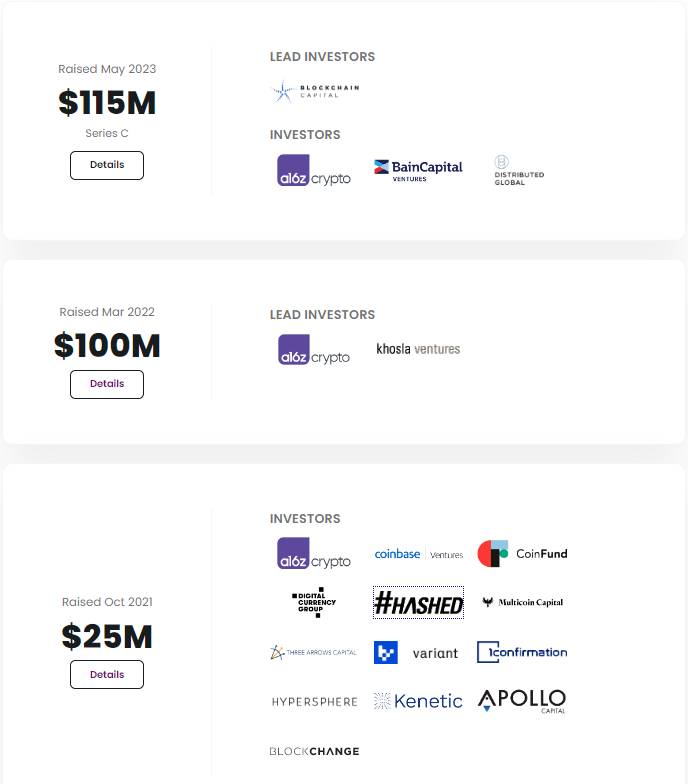
– Partners: Worldcoin is currently partnering with Optimism to integrate its two main products, World ID and World App, onto the mainnet of this Layer 2 blockchain.
What problem does Worldcoin (WLD) want to solve?
According to the McKinsey Global Institute, there are currently over 4.4 billion people without legal identity or who cannot verify their identity through digital means. The iris of each person’s eyeball performs identity verification.
To realize this vision, there is a fundamental premise: the circulation of the same type of currency globally. The more people hold and use this currency, the greater the benefit for each participant. Worldcoin is an open-source protocol created to address this issue, distributing most of its Worldcoin Tokens (80%) for free to users. Indeed, one could consider this a historic first for humanity: a token distributed equitably on a global scale.
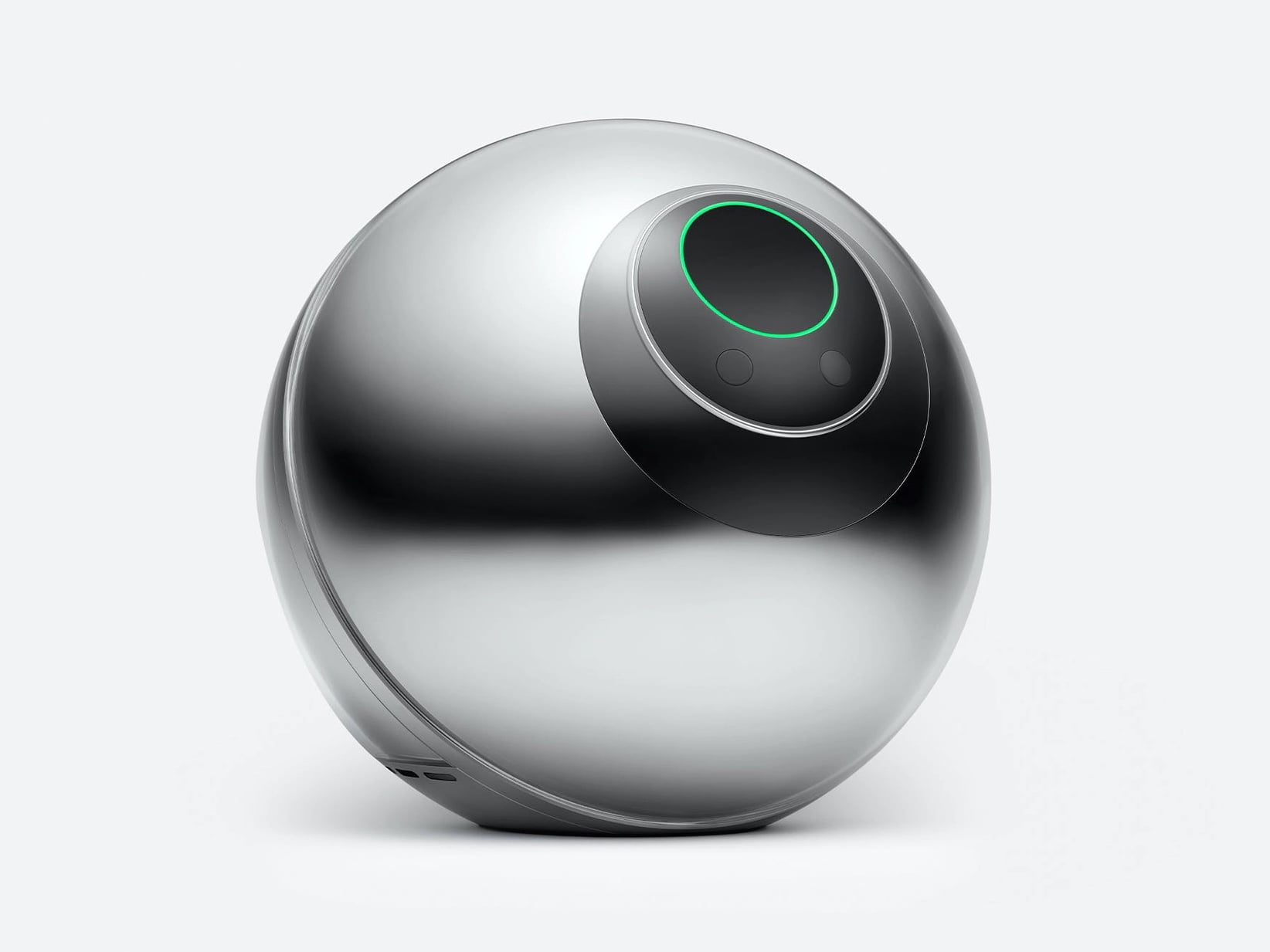
Mục đich của Worldcoin là gì?Currently, Worldcoin is utilizing an Airdrop method to distribute its own Worldcoin Tokens, issuing them for free with the aid of blockchain technology and evenly distributing them to all who successfully register. You do not need proof of assets, on-chain interaction data, whitelists, passports, or identification cards… you just need to be a living person.
Moreover, to make the distribution process even fairer and to address behaviors such as common Sybil attacks (where one user registers multiple accounts to gain undue advantage), Worldcoin uses biometrics to verify its users. Specifically, the Worldcoin team has developed a hardware device called the Orb, designed to collect people’s iris information to resolve the issue of Sybil attacks.
What is Orb?
Worldcoin has developed a biometric device named “Orb” for user identification through eye scanning. After the “eye scan,” users will receive a World ID which will serve as a global digital passport.
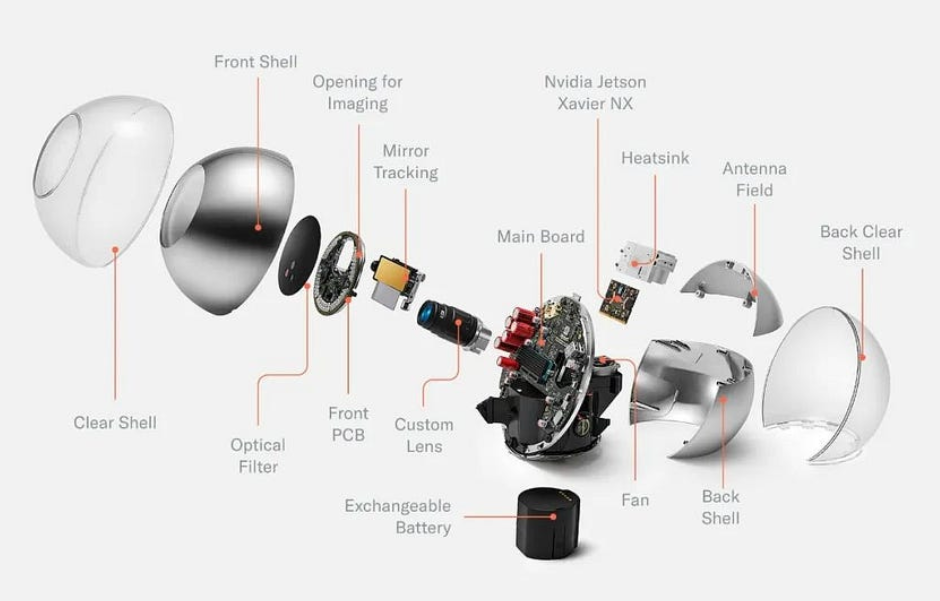
The process of using the Orb to verify identity is as follows:
- Step 1: The Orb scans and captures an image of the user’s eye.
- Step 2: The eye image captured by the Orb is converted into a hash function and sent to the Worldcoin server to check if the user has previously registered.
- Step 3: If the user has not registered before, the hash function will be added to the Worldcoin database and blockchain.
- Step 4: Users will receive free WLD tokens, obtain their own World ID, and gain access to Worldcoin’s World App.
In summary, the Orb can be directly understood as a device that scans the user’s eyes. The Worldcoin team claims that the images will be processed on the Orb and then deleted, while not requiring any other information and not being tied to a wallet. The only thing it needs is the iris code.
The Orb Operator (node operator) will be responsible for promoting Worldcoin and helping people complete their registration. And each time a new user is added, they will receive a fee. Worldcoin does not want the network to be controlled by a single entity, so the Orb node operators play a major role. Notably, to encourage people to participate earlier, the tokens received by the user and the operator will decrease over time.
How does Worldcoin (WLD coin) work?
The Worldcoin system is composed of two main entities: the Worldcoin Foundation and Tools for Humanity. Specifically:
- The Worldcoin Foundation is a non-profit organization with the primary responsibility of supporting and managing the Worldcoin community.
- Tools for Humanity is a technology company and the actual developer of Worldcoin.
Currently, Worldcoin primarily consists of three key components: World ID, Worldcoin Token (WLD), and the World APP.
-
The World ID is a privacy-centric, decentralized identity protocol. Users can use World ID to log in to websites and applications while proving their authenticity and uniqueness without revealing their actual identity.
-
The Worldcoin Token (WLD) is issued using the Ethereum ERC-20 token standard. The Worldcoin Token (WLD) is the first token to be distributed for free to people all over the world.
-
The World APP is a fully self-custodial application that enables payments, purchases, and global money transfers using WLD, digital assets, and traditional currencies.
How can we use Worldcoin (WLD coin)?
If you’re also interested in WLD coin, you may want to get a basic understanding of the following. Currently, you can use Worldcoin and receive WLD coin by following these steps.
Step 1: Use the World APP to set up a Worldcoin account and connect to a digital wallet.
Upon first use of the World APP, two private keys will be randomly generated, one for the World ID and another for the crypto wallet. It’s important to note that these two private keys are generated randomly and independently of each other and are not connected to any biometric information.
Step 2:
You can access the World App without creating a World ID. However, to acquire Worldcoin tokens, your identity needs to be verified using an Orb. This involves an Orb device scanning your retina to ensure your identity is both authentic and unique.
The Orb generates a distinct code (Iris Code) from your retina scan. During registration, this iris code is sent along with the application, which is secured with the Orb’s private key to prevent any fraudulent activities. This submitted iris code is then cross-checked with existing iris codes in the database to confirm if it’s the user’s first registration. Once this check is successful, the user’s identity commitment is recorded on a blockchain through a smart contract.
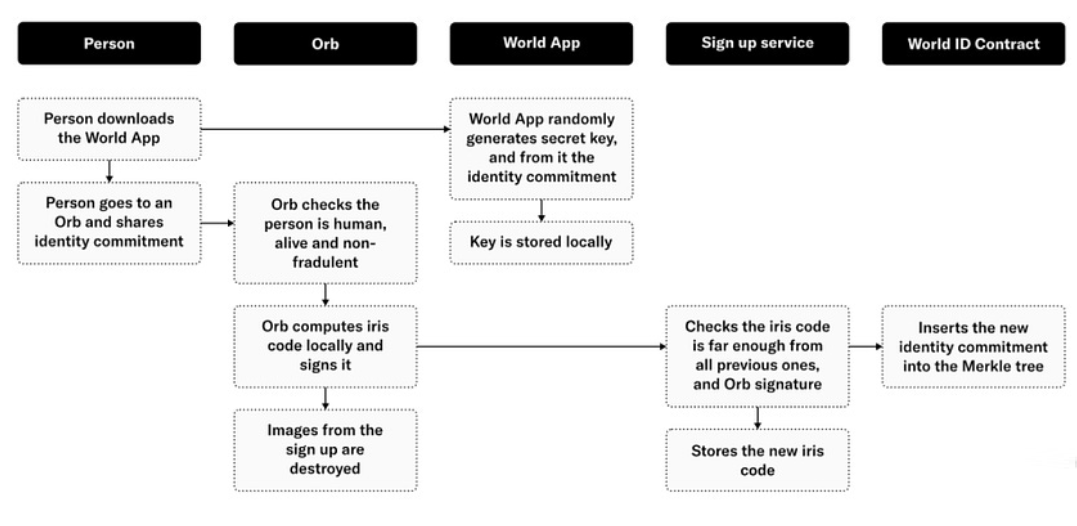
In essence, the Orb utilizes your eye’s biometric iris patterns to establish your unique identity, which is then used to create your own digital World ID. This ID may be utilized anonymously across various everyday applications in the future and will not reveal your actual identity.
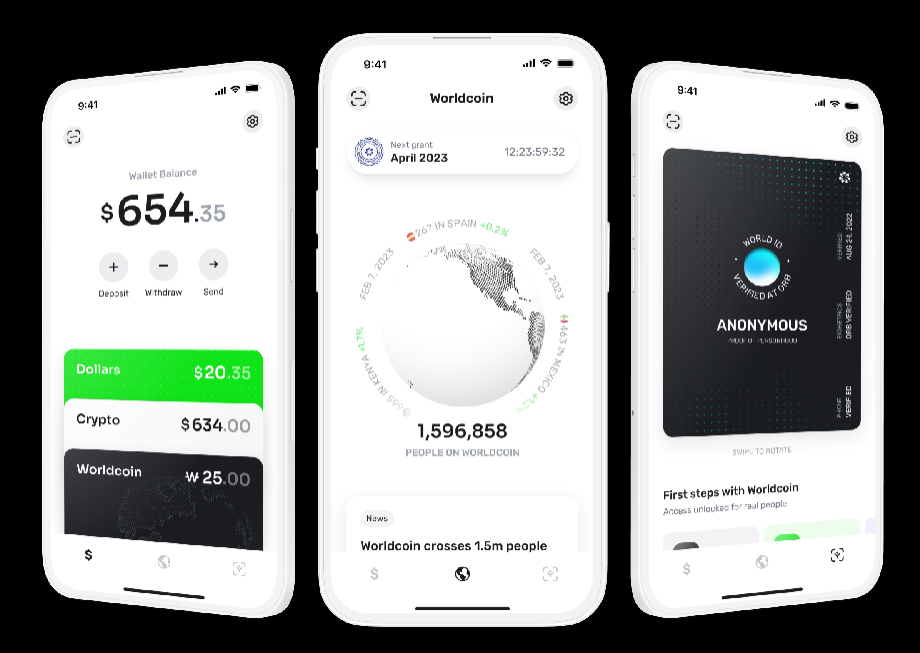
Is Worldcoin affiliated with Open AI and ChatGPT?
The link between Worldcoin and ChatGPT, as well as OpenAI, is currently anchored by the fact that both were initiated by Sam Altman. The future may or may not see a deeper synergy between them, as this remains uncertain.
Some proponents of AI postulate that Worldcoin might exert an influence on ChatGPT and similar AI-driven chatbots due to their ability to mimic human dialogue. As technology progresses, the lines between AI-driven bots and actual humans may blur online. In such scenarios, the World ID system of Worldcoin, which leverages blockchain to maintain user privacy, could become instrumental in differentiating humans from AI entities. Moreover, World ID could potentially facilitate access to various applications, including ChatGPT and other social platforms.
Altman also posits that Worldcoin can play a role in addressing the economic transformations anticipated with the advent of generative AI technologies. He contends that the World ID from Worldcoin could potentially be scaled to extend Universal Basic Income (UBI) to billions, providing financial upliftment to underserved and impoverished populations, thereby helping to reduce economic disparities.
Since World IDs are exclusive to humans, their integration with iris-scanning technology could offer a robust mechanism for governments to implement UBI schemes with minimized fraud risks. Altman envisions this as a core objective for Worldcoin and its World ID system. Yet, this vision is met with skepticism by some, who question the practical and security implications of such an approach.
Worldcoin (WLD) tokenomics
WLD Token Key Metric
- Token Name: Worldcoin
- Ticker: WLD
- Blockchain: Ethereum, Optimism
- Token Contract:
– Ethereum: 0x163f8C2467924be0ae7B5347228CABF260318753
– Optimism: 0xdC6fF44d5d932Cbd77B52E5612Ba0529DC6226F1 - Token Type: ERC-20
- Total Supply: 10,000,000,000 WLD
- Circulating Supply: Updating…
WLD Token Use Cases
The WLD token has the following use cases:
- Governance: WLD token holders are granted management rights and can participate in voting on new changes to the platform.
- Transaction Fees: The WLD token is also used as a transaction fee for activities on the World App.
- Asset: Users can store the WLD token as an asset and use it to carry out activities such as transferring money, buying and selling goods and services on the World App.
Worldcoin has devised a system where each individual verified through the Orb and in possession of a World ID is eligible to periodically receive free WLD tokens. This initiative has the potential to make WLD one of the most broadly distributed cryptocurrencies. The total supply of WLD tokens is capped at 10 billion for a period of 15 years following the launch, with this cap being enforced through a smart contract. After this period, the decision to introduce an annual inflation rate to maintain the ecosystem’s viability will be justify to the token’s governance.
As of now, the distribution of the 10 billion WLD tokens has been predetermined for different groups within the ecosystem. The majority, 75%, is earmarked for the Worldcoin user community, while 9.8% has been designated for the original development team. Tools for Humanity (TFH) investors will receive 13.5%, and 1.7% is set aside in a TFH reserve.
The WLD token not only acts as a utility token but also carries governance rights, giving token holders influence over the direction of the project. The governance framework of WLD extends beyond the standard one-token-one-vote principle by leveraging the World ID system to establish a one-person-one-vote policy. This dual voting mechanism could introduce novel governance models under the stewardship of The Worldcoin Foundation. This non-profit entity is tasked with nurturing and supporting the Worldcoin ecosystem until it becomes self-sustaining.
In line with these goals, The Worldcoin Foundation is gearing up to invite proposals from its community members. Together, they aim to shape the integration of WLD tokens and World IDs within the governance framework of Worldcoin.
Risks and Challenges for Worldcoin (WLD coin)
WorldCoin is an innovative blockchain project led by the renowned founder of ChatGPT, Sam Altman. Despite having influential founders behind the project, its advanced concepts and unique innovations still face a great deal of skepticism and challenges. Specifically, the main issues WorldCoin encounters include the following aspects:
- The retinal identification technology and the associated processes behind Orb are unfamiliar to most people. Some users may have limited understanding of WorldCoin and see it merely as an app where they can receive free tokens.
- Crypto and identity verification still grapple with numerous legal issues, which represent some of the biggest challenges. For example, certain countries and regions have restrictions and regulations regarding digital currency and identity verification systems, which prevents WorldCoin from penetrating these nations. Currently, WorldCoin is only licensed in 24 countries, including 14 developing nations and 8 countries in Africa. Residents in impoverished areas often lack legal protection, and the cost of data collection is also the lowest. Moreover, users in these regions typically have little understanding of the cryptocurrency industry and WorldCoin, and their participation in the crypto world is not necessarily positive.
- One such roadblock is accessibility. Currently, Worldcoin only has 1,500 Orbs it intends to make available in 35 cities in 20 countries. Considering the world has over seven billion people, 1,500 Orbs will not be enough to serve the global population. And even if Altman and his team were able to produce the needed number of Orbs, there is the possibility that certain governments could ban the use of Orbs just like we’ve witnessed countries ban cryptocurrencies over the last few years.
- The long-term viability of eye scan technology: We can set aside hypothetical questions about potential flaws in Orb hardware, ZKP verification, and other aspects. Looking ahead, a latent concern is whether the eye codes generated from the scanning process will remain consistent as a person’s age changes.
- Technical feasibility: The technical solutions of WorldCoin have not been widely tested or applied, so its technical feasibility remains uncertain. Some have started to question the reliability and stability of its biometric technology, particularly in terms of privacy protection. Although the WorldCoin team asserts that they will not link users’ biometric data with Orb and will only create locally irreversible, one-way IrisHash, this does not fully eliminate people’s concerns about privacy issues. Even if the PoP mechanism can verify that the person behind an account is real, there can still be cases where the registered account and the actual user are not the same.
- Competition: The market for identity verification systems and digital currencies is highly competitive, and WorldCoin needs to face challenges from other competitors. For instance, established digital currencies and identity verification systems, as well as emerging competitors, continuously release more appealing and advantageous products and services, which can impact WorldCoin’s market share and user base.
- Worldcoin is a project in the decentralized identity verification field, aimed at the global popularization of cryptocurrency.
- It was created by the founder of ChatGPT.
- Worldcoin has received several large investments, including from a16z at the end of last May.
- Worldcoin will scan users’ eye patterns to create a digital identity for them.
- The WorldApp is available in many countries and can be downloaded.
- Users will be awarded WLD tokens for participating in the eye-scanning process. 80% of the tokens will be distributed to users who participate in the eye scan.
Related post:
In general, for the project to grow long-term and sustainably, it requires societal acceptance and must be widely accepted. According to the official website, there are only 1.7 million registered users of the World APP to date. Even though there is a rapid growth rate with a new user every 14 seconds, this rate is still far from reaching the initial goal set by Sam Altman of achieving 1 billion users by 2023. Therefore, WLD needs to take steps to improve societal acceptance, such as increasing transparency, posting real-time updates, and maintaining communication with the community. These initiatives could help increase user trust in Worldcoin and its societal acceptance.
The cryptocurrency industry has long aimed towards “mass adoption.” The efforts of Worldcoin in trying to break down barriers to make cryptocurrency user-friendly for everyone cannot be denied. After two years of disruption, Worldcoin, the cryptocurrency project led by Sam Altman, is finally starting to make real progress. As an innovative cryptocurrency project, Worldcoin will still face many doubts and challenges in the short term, but without a doubt, it is one of the most promising cryptocurrency applications to date. While the journey ahead is long and arduous, at the very least, it has a strong support team and a token system that will be provided for free (which could potentially make it attractive to a strong community in the future).
And what about you, have you understood what WLD coin is? You know what WLD coin is, right? How do you assess this project? Do you think it has potential? Please share your thoughts with us.
Invest286.com



























